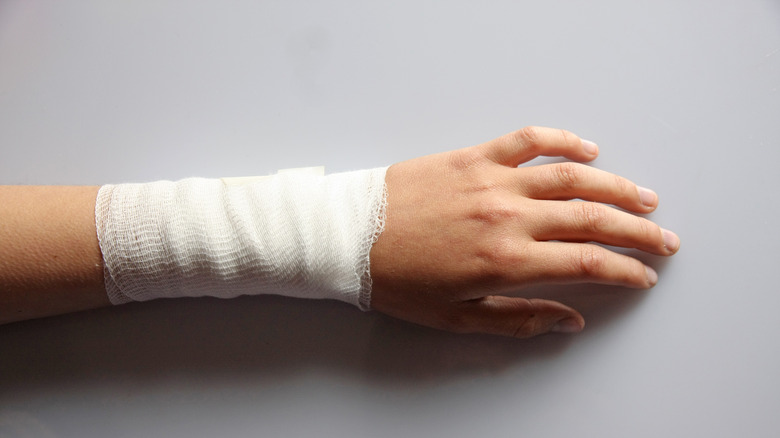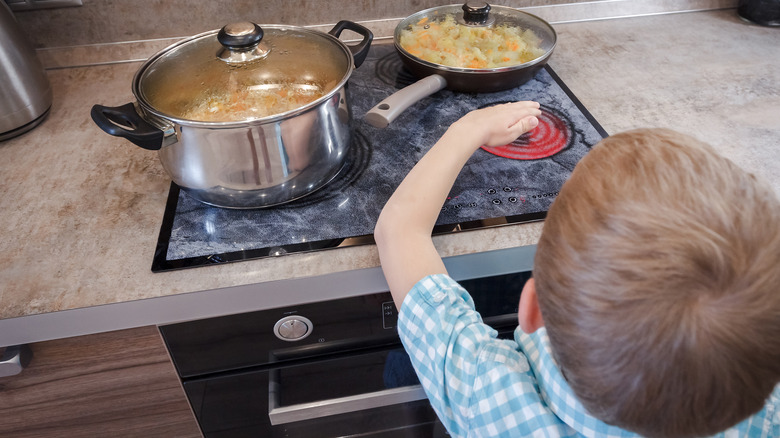Is It True That Butter Can Help Heal Burns?
It happens to the best of us. You skim your ear with your curling iron or singe your hand while cooking. Minor burns that only affect the top layer of the skin are usually not serious injuries, but they can be quite painful (via American Academy of Dermatology). They can also cause permanent scarring, so you'll want to act quickly at the first sign of a burn.
While it's a widely held belief, you should never put butter on a burn, according to the Mayo Clinic. Doing so, or applying other greasy ointments, actually retains heat, which is the exact opposite of what needs to happen. Butter can cause more harm than good, leading the trapped heat to cause further damage and even increase the possibility of an infection. Rather, the heat needs to be released. This can be done by placing the burnt part of your skin under cool water (via UAMS Health).
How to treat a minor burn at home
If you or your child gets burned at home, the first thing you need to do is cool the burn. Run it under mildly cool tap water until the pain goes away (via Mayo Clinic). Don't use ice, as it can further irritate the skin (via UAMS Health). If you're wearing jewelry like rings or bracelets or other tight items in the area of the burn, remove them in case swelling occurs. Afterwards, keeping the damaged area hydrated is key, so you'll want to apply lotion to soothe the skin. In addition to butter and greasy ointments, avoid applying toothpaste to a burn (via American Academy of Dermatology). These old wives' tales will not make burns better, but rather hinder the healing process. Cover the burn with a loose-fitting bandage.
If you're experiencing pain or swelling after a burn, an over-the-counter pain reliever like ibuprofen or acetaminophen can help. If you get blisters after a burn, do not pop them, as this can increase your risk for infection. If a blister breaks on its own, be sure to gently clean the area with soap and water.


